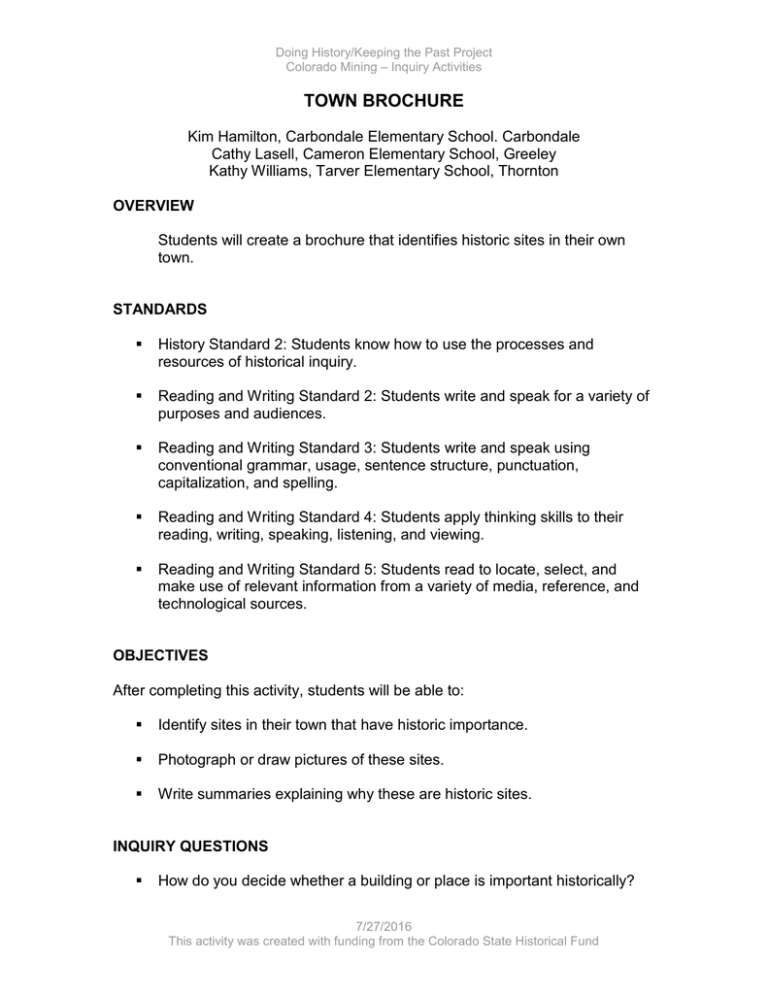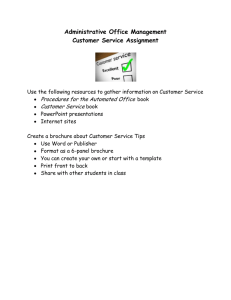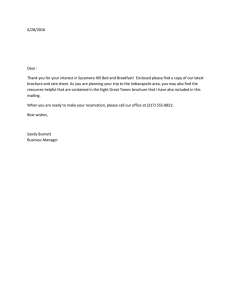TOWN BROCHURE
advertisement

Doing History/Keeping the Past Project Colorado Mining – Inquiry Activities TOWN BROCHURE Kim Hamilton, Carbondale Elementary School. Carbondale Cathy Lasell, Cameron Elementary School, Greeley Kathy Williams, Tarver Elementary School, Thornton OVERVIEW Students will create a brochure that identifies historic sites in their own town. STANDARDS History Standard 2: Students know how to use the processes and resources of historical inquiry. Reading and Writing Standard 2: Students write and speak for a variety of purposes and audiences. Reading and Writing Standard 3: Students write and speak using conventional grammar, usage, sentence structure, punctuation, capitalization, and spelling. Reading and Writing Standard 4: Students apply thinking skills to their reading, writing, speaking, listening, and viewing. Reading and Writing Standard 5: Students read to locate, select, and make use of relevant information from a variety of media, reference, and technological sources. OBJECTIVES After completing this activity, students will be able to: Identify sites in their town that have historic importance. Photograph or draw pictures of these sites. Write summaries explaining why these are historic sites. INQUIRY QUESTIONS How do you decide whether a building or place is important historically? 7/27/2016 This activity was created with funding from the Colorado State Historical Fund Doing History/Keeping the Past Project Colorado Mining – Inquiry Activities What buildings or places in your town have historical importance? Why are these sites important historically? What would you include in a brochure that described these places? PROCEDURE 1. Obtain a camera (digital is best); Chamber of Commerce brochures from nearby cities. 2. Take photographs of several sites in your community that have historical importance. 3. Have the class brainstorm why (in general) places have historical value? (Oldest building, example of an interesting architectural style, location where an important event took place, etc.?) 4. Show the students the photographs or transparencies of the places that you selected. Ask if they can think of other places that should be included. 5. Ask the students to explain why these particular sites have historical value. 6. Divide up the work for producing a brochure. Provide time for the students to take additional photographs, write summaries for each photo, and design the brochure. Look at brochures from other towns as examples. 7. Publish and display the brochure in a prominent place in the school or in the community. 7/27/2016 This activity was created with funding from the Colorado State Historical Fund

